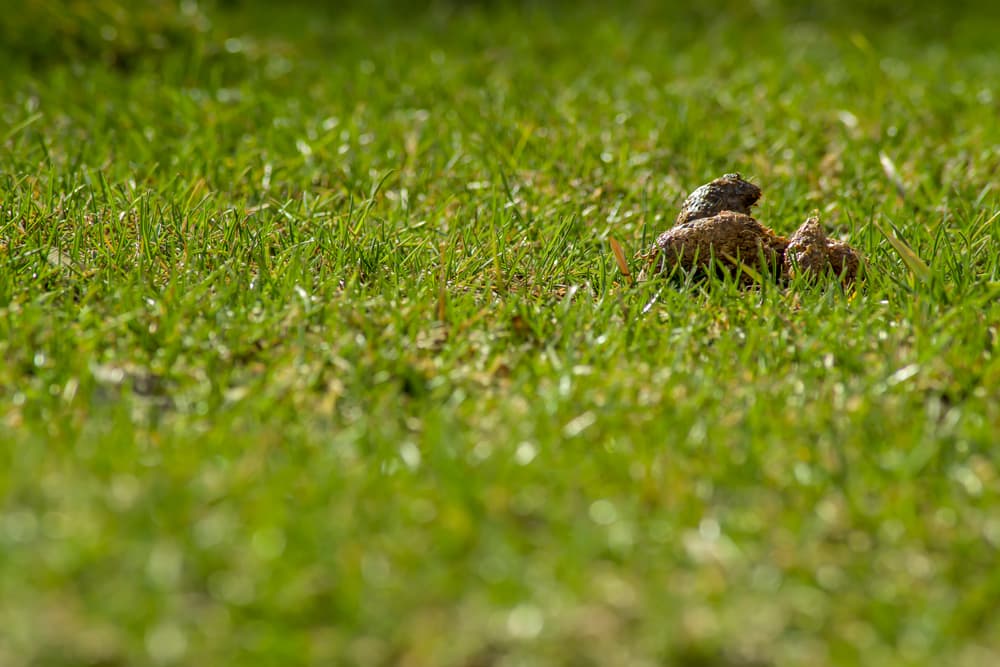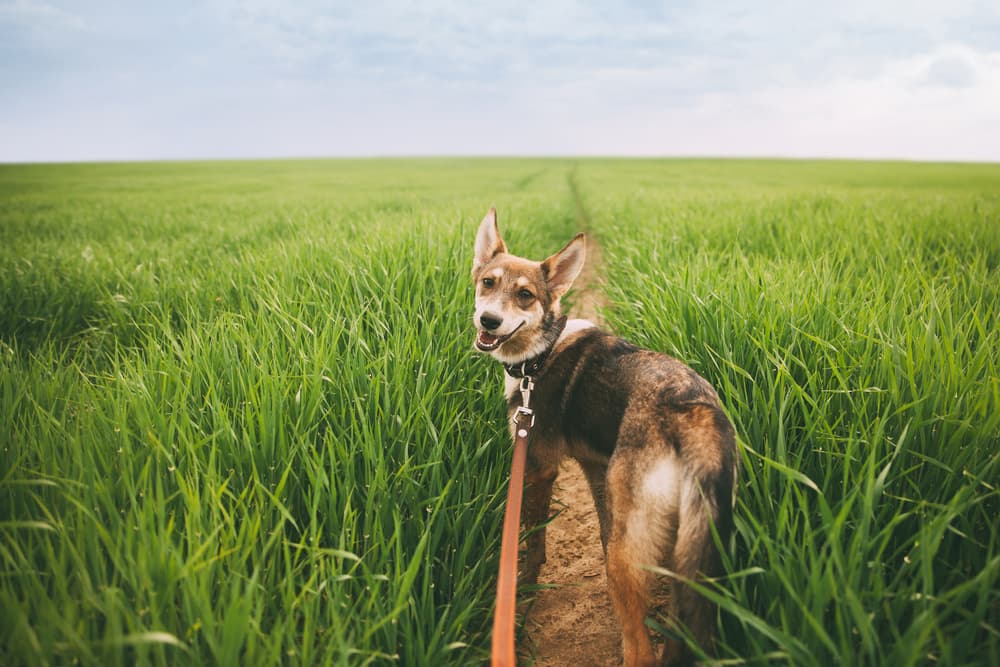Why Does My Dog Have Yellow Poop?
While there are a handful of reasons as to why your dog’s poop has turned yellow, there is not an immediate concern that would leave you feeling the need to rush to the pet hospital. Think of it this way: consider yellow dog poop as a warning sign. Pet owners should familiarize themselves with the main causes of a change in fecal matter colors because it is a simple, yet effective approach to better understand what is going on inside your furry friend.
Yellow poop can be a little alarming at first, but there is no immediate need for pet owners to fret. Food intolerance is one of the leading causes of yellow dog poop, and owners can hopefully be traced back to when exactly the change happened.
If you recently changed your pet’s food, it can take a little time for your dog to adjust to new food or treats.1 If you noticed that your dog’s poop turned yellow around the same time that you may have changed your dog’s food or tried out some new treats, give it a few days to determine how your dog’s body will adjust before calling in for medical reinforcements. If the yellow dog poop continues on for too long or does not resolve itself, consider changing the food back to avoid further upsetting your dog’s stomach.
Another cause of yellow dog poop can be a result of indigestion. As we know, a change to our dog’s food or diet can lead to an upset stomach, which in turn often results in yellowish dog poop. When this irritation is prevalent, your dog’s body works diligently to try to quickly get rid of the so-called foreign matters or food that it is not used to, and thus often leads to diarrhea that tends to be yellow in color. The reason that the dog poop becomes yellow is because when the body is trying to get rid of these upsetting trigger items, it does not give the body enough time for the bile to properly process.
If you are certain that your dog has not eaten any new treats or food, then it is possible that your dog’s yellow poop is a sign of a bacterial or parasitic infection in your dog’s digestive tract. If an infection is left untreated, it could develop into a greater, and more serious issue.
Aside from a bacterial infection, another one of the possible causes of an infection could be a result of a parasite in your dog’s intestines or digestive tract. If you notice that the yellow dog poop persists with no self remedy, it may be time to schedule a visit with a veterinarian to best diagnose if your pet has an infection.
What Color Should Dog Poop Be?

First things first—dog poop should be brown. The exact shade depends on what your dog eats. For example, dyes in your dog’s food can stain his feces a variation of that color.
Feces is brown because of the breakdown of a substance called bile, which is an important part of digestion. Bile is made in the liver, stored in the gallbladder, and secreted into the intestines just as food exits the stomach and starts its way through the intestines. Most bile is reabsorbed as the food material is digested, but some gets trapped. It then undergoes changes as the food material is further digested into feces which cause the originally green material to turn yellow and then brown.

Digestion of food into feces is a complex process. In addition to color, the consistency, coating, and contents are all important features of poop to consider when evaluating your pet’s health. Consistency refers to whether it’s firm, formed, soft, or liquid. Coating refers to whether there is mucus, blood, or both on the surface of the feces. The contents of feces should be fairly uniform. For example, finding blades of grass or pieces of a toy is abnormal.
What’s the Deal with Changing Poop Colors?
Before we get into the issues with yellow poop, it’s a good idea to understand why feces changes physical characteristics in the first place.
Believe it or not, color-changing feces is pretty common. Most dogs will experience consistency and color changes at some point in their life. No matter how minor the change is, take it as a sign!
As mentioned earlier, poop says a lot about your dog’s health. The gastrointestinal tract is constantly working to process foods. Even when your dog is resting, it’s working overtime.
All it takes is for one issue to throw the entire process out of whack. Various biological functions will impact the digestion process, leading to physical changes in the poop. Internal bleeding can darken the poop and cause red coloration.
Meanwhile, yellow and green hues are often attributed to liver and bile production! Food and waste go through many steps before making it onto your lawn. When one of those steps is altered due to health issues, the feces will reflect that.
It’s always a good course of action to visit your vet when major changes rear their ugly heads. One-off issues don’t require immediate care. But if the problem persists, it’s always best to take your pup to a vet for some in-depth analysis.
Yellow Dog Poop: 7 Causes & What Pet Owners Should Do About It
Dealing with dog poop is an everyday occurrence for dog owners. While many people balk at the idea of having to handle dog poop, it’s something that most of us get used to! In fact, we get so used to it that we start to observe minute changes in the feces.
This is a good thing! There’s no better way to gauge the health of your dog than by examining the color, consistency, contents, and coating of their waste.
Ideally, healthy dog poop should be relatively firm and uniformly brown. So when poop goes beyond those norms, it stands out like a sore thumb!
One issue that can cause some alarm with dog owners is yellow poop. Whether it takes on a deep shade of mustard yellow or has a slimy yellow coating, yellow dog poop is not something you should ignore!